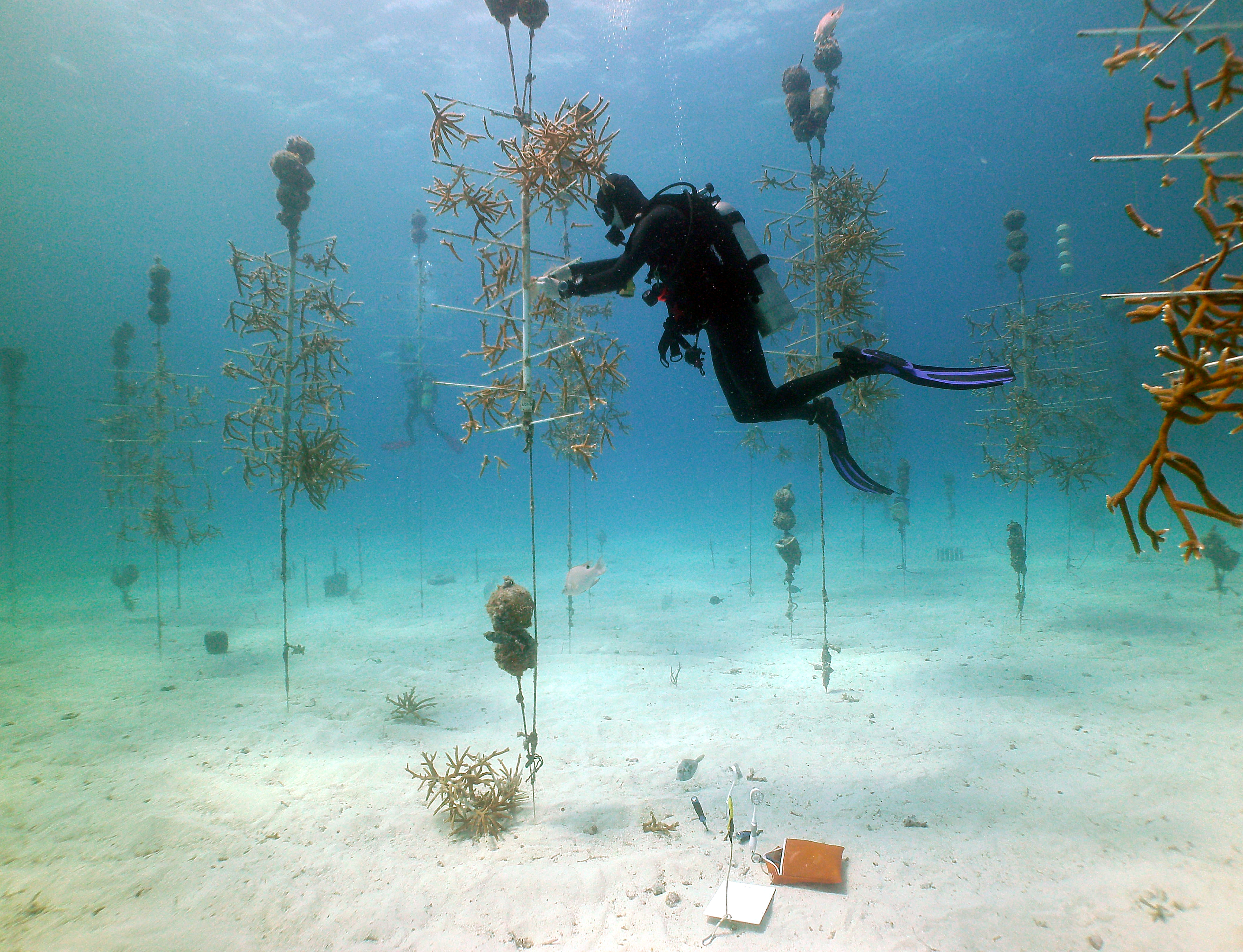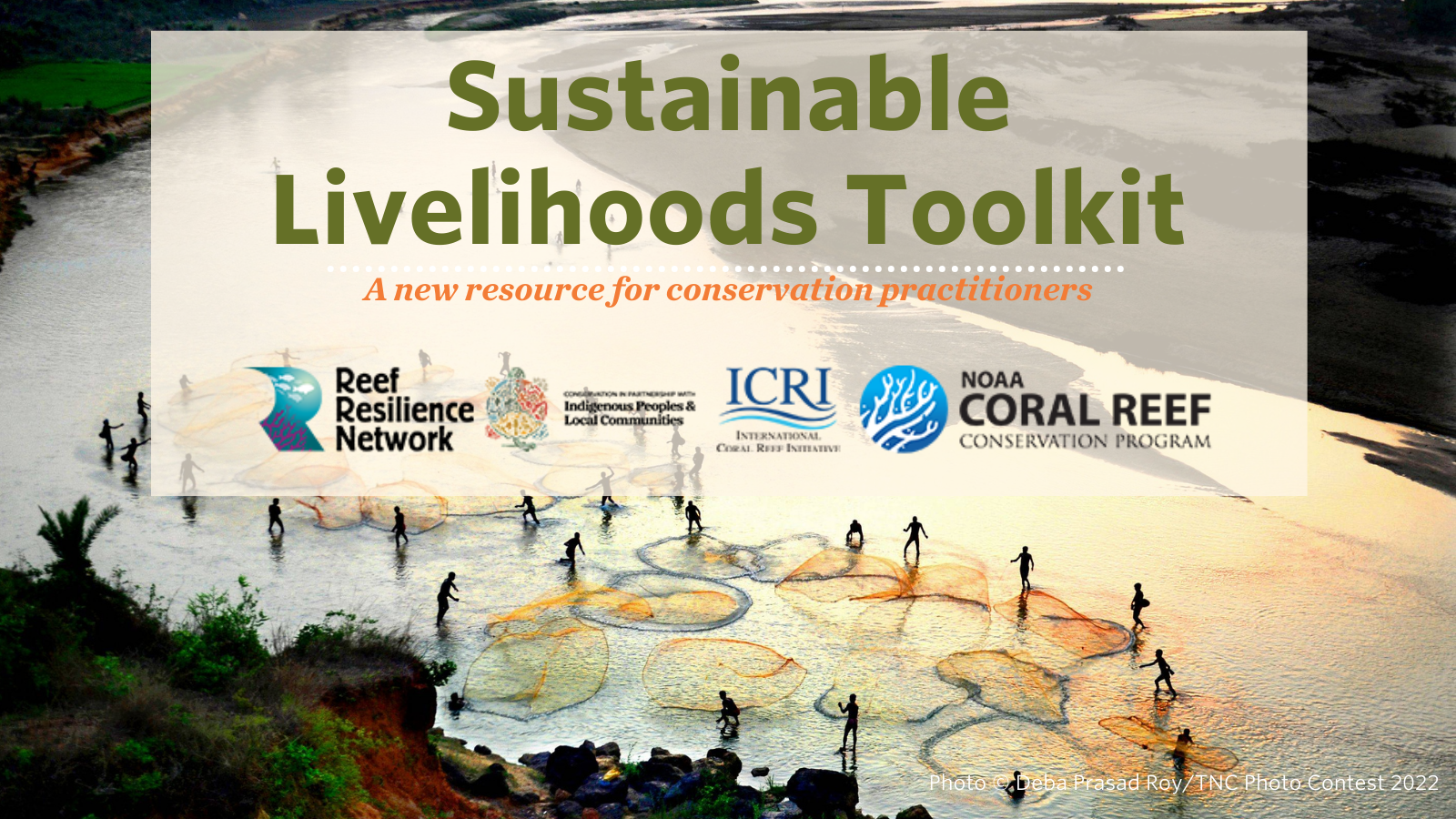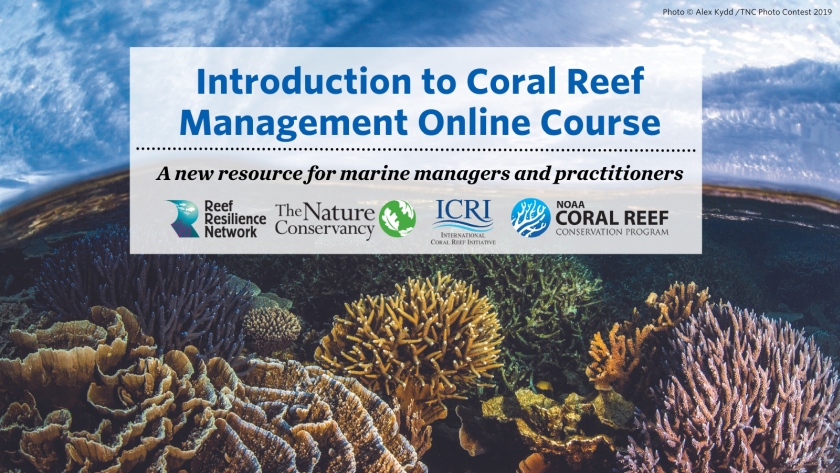This workshop was held November 15-17, 2016 with the goal of fostering collaboration and technology transfer among coral restoration scientists, practitioners, and managers, and initiating a community of practice that continues to address the evolving role of active coral restoration in the evolutionary history of coral reef ecosystems. The talks cover recent scientific advances in coral biology to help plan and experiment with coral restoration, successes and failures in recent coral restoration projects, and inspiring future research to help advance the practice of coral restoration. The recordings and presentations can be viewed below.
Presentations:
Day 1 – November 15, 2016:
- Taking coral restoration to the ecosystem scale – Tom Moore, NOAA Coral Reef Restoration Program (Video, Presentation)
- The role of restoration in coral reef ecosystems – Les Kaufman, Boston University (Video, Presentation)
- Valuing social benefits of restoration – Mike Beck, The Nature Conservancy (No Video, Presentation)
- The scientific foundation for successful coral restoration programs – Bob Richmond, University of Hawaii (Video, Presentation)
- Beyond restoration – intervention ecology – Margaret Miller, NOAA Fisheries Science Center (Video, Presentation)
- An overview of the use of genetics in coral restoration – Andrew Baker, University of Miami (Video, Presentation)
- Influence of genotype and the environment – Crawford Drury, University of Miami (Video, Presentation)
- Thermal trait selections including symbionts – John Parkinson, Oregon State University (Video, Presentation)
- Phylogenetic tree project overview – Scott Winters, Coral Restoration Foundation (Video, Presentation)
- Using hybridization to aid restoration – Nikki Fogarty, Nova Southeastern University (No Video, Presentation)
- Genetic basis of disease resistance – Steve Vollmer, Northeastern University (Video, No Presentation)
- Disease intervention as a restoration tool – Cheryl Woodley, NOAA/NCCOS (Video, Presentation)
- Interaction of temperature stress and disease resistance – Erin Muller, Mote Marine Laboratory (No Video, No Presentation)
Day 2 – November 16, 2016:
- How can we restore reef resilience at scale? – Dirk Petersen, SECORE (No Video, Presentation)
- Thinking systematically about how we accomplish our day to day restoration work – Andrew Ross, Seascape Caribbean (No Video, Presentation)
Scaling up in-water nurseries
- Tracking and management of a large nursery – Jessica Levy, Coral Restoration Foundation – Florida (No Video, Presentation)
- New variations on commonly used nursery structures
- Samuel Suleiman, Sociedad Ambiente Marino – Puerto Rico (No Video, Presentation)
- Ken Nedimyer, Coral Restoration Foundation – Florida (Video, Presentation)
- Sean Griffin NOAA, Restoration Center – Puerto Rico (Video, Presentation)
- Tadzio Bervoets, Nature Foundation – St Maarten (Video, Presentation)
- Prevention of storm damage and experiences
- Elizabeth Larson, Nova Southeastern University – Florida (Video, Presentation)
- Ken Nedimyer, Coral Restoration Foundation – Florida (Video, Presentation)
- Partnerships with resorts and dive operators – Rita Ines Sellares, Dominican Foundation of Marine Studies (Video, Presentation)
- Managing a volunteer workforce
- Samuel Suleiman, Sociedad Ambiente Marino – Puerto Rico (Video, Presentation)
- Jessica Levy, Coral Restoration Foundation – Florida (Video, Presentation)
- Managing a paid community workforce – Lisa Carne, Fragments of Hope – Belize (Video, Presentation)
- Reducing diver/coral interaction time – Ken Nedimyer, Coral Restoration Foundation – Florida (Video, Presentation)
Land-based nurseries
- Trade-offs and BMPs in nursery design – Keri O’Neil, The Florida Aquarium (Video, Presentation)
- Land-based nurseries as tools for restoration – Scott Graves, The Florida Aquarium (Video, Presentation)
- Quarantine and health management – Cindy Lewis, Keys Marine Lab/Florida International Univ. (Video, Presentation)
- Micro-fragging and re-sheeting – Dave Vaughan, Mote Marine Laboratory (No Video, Presentation)
Larval propagation
- Settlement cues for acroporid larvae – Valerie Paul, Smithsonian Institution (Video, Presentation)
- Restoring with cryopreserved gametes – Mary Hagedorn, Smithsonian Institution (No Video, No Presentation)
- Sexual propagation of non-acroporids – Kristen Marhaver, CARMABI – Curaçao (No Video, No Presentation)
- Scaling-up and reducing the costs – Valerie Chamberland, SECORE – Curaçao (Video, Presentation)
- Large scale restoration using sexual recruits – Mark van Koningsveld, Van Oord (Video, Presentation)
Scaling-Up Outplanting: Ideas on current best approaches
- Lisa Carne – Fragments of Hope – Belize (Video, Presentation)
- Ken Nedimyer – Coral Restoration Foundation – Florida (Video, Presentation)
- Hector Ruiz – HJR Reefscaping – Puerto Rico (Video, Presentation)
- Michael Nemeth – NOAA Restoration Center – Puerto Rico (Video, Presentation)
- Austin Bowden-Kerby – Corals for Conservation – Fiji (Video, Presentation)
- Phanor H Montoya Maya – Corales de Paz / Nature Seychelles – Colombia (Video, Presentation)
- Peter Gayle – Discovery Bay Marine Lab – Jamaica (Video, Presentation)
- Gabriela Nava – Oceanus – Mexico (Video, Presentation)
Scaling-Up Outplanting: Ideas to reduce interaction time and increase efficiency
- Ken Nedimyer, Coral Restoration Foundation – Florida (Video, Presentation)
- Victor Manuel Galvan, Punta Cana – Dominican Republic (Video, Presentation)
- Andrew Ross, Seascape Caribbean – Jamaica (No Video, No Presentation)
- Tom Moore, NOAA Restoration Center – Florida (Video, Presentation)
- Anastazia Banaszak, Unversidad Nacional Autonoma de Mexico (Video, Presentation)
- Sean Griffin, NOAA Restoration Center – Puerto Rico (Video, Presentation)
- Sean Griffin, NOAA Restoration Center – Puerto Rico (Video, Presentation)
Day 3 – November 17, 2016:
Optimizing restoration site selection
- Current approaches to site selection – Christopher Slade, The Nature Conservancy (Video, Presentation)
- Species distributions and restoration – Shay Viehman, NOAA NCCOS (Video, Presentation)
- Prioritization of restoration sites through modeling and Zonation – Katie Wirt Ames, FL Fish and Wildlife Research Institute (Video, Presentation)
- Larval connectivity modeling and restoration – Joana Figueiredo, Nova Southeastern University (No Video, No Presentation)
- Optimizing for calcification – Ilsa Kuffner, US Geological Survey – Florida (Video, Presentation)
- Using population models – Alex Molina, SAM – University of Puerto Rico (Video, Presentation)
- Using population models – Tali Vardi, NOAA Fisheries (Video, Presentation)
Monitoring for ecosystem recovery
- Review of new, large-area monitoring methods – Stuart Sandin, Scripps Institution of Oceanography (Video, No Presentation)
- Using photo-mosaics to monitor restoration success – Brooke Gintert, University of Miami (Video, Presentation)
- Snorkeler/GPS monitoring of reef-scale trends – Dana Williams, NOAA – SE Fisheries Science Center (Video, Presentation)
- Restoration as fish habitat – Michael Nemeth, NOAA Restoration Center (Video, Presentation)
- Developing programmatic benchmarks – Stephanie Shopmeyer, University of Miami (Video, Presentation)
Next steps
- Integrating restoration practices in the U.S. – Alison Moulding, NOAA Protected Resources (Video, Presentation)
- Overview of coral restoration consortium – Jennifer Moore, NOAA Protected Resources (Video, Presentation)
- Reef managers survey results and reef resilience toolkit – Liz Shaver, Duke University (Video, Presentation)
Photo © Coral Restoration Foundation



